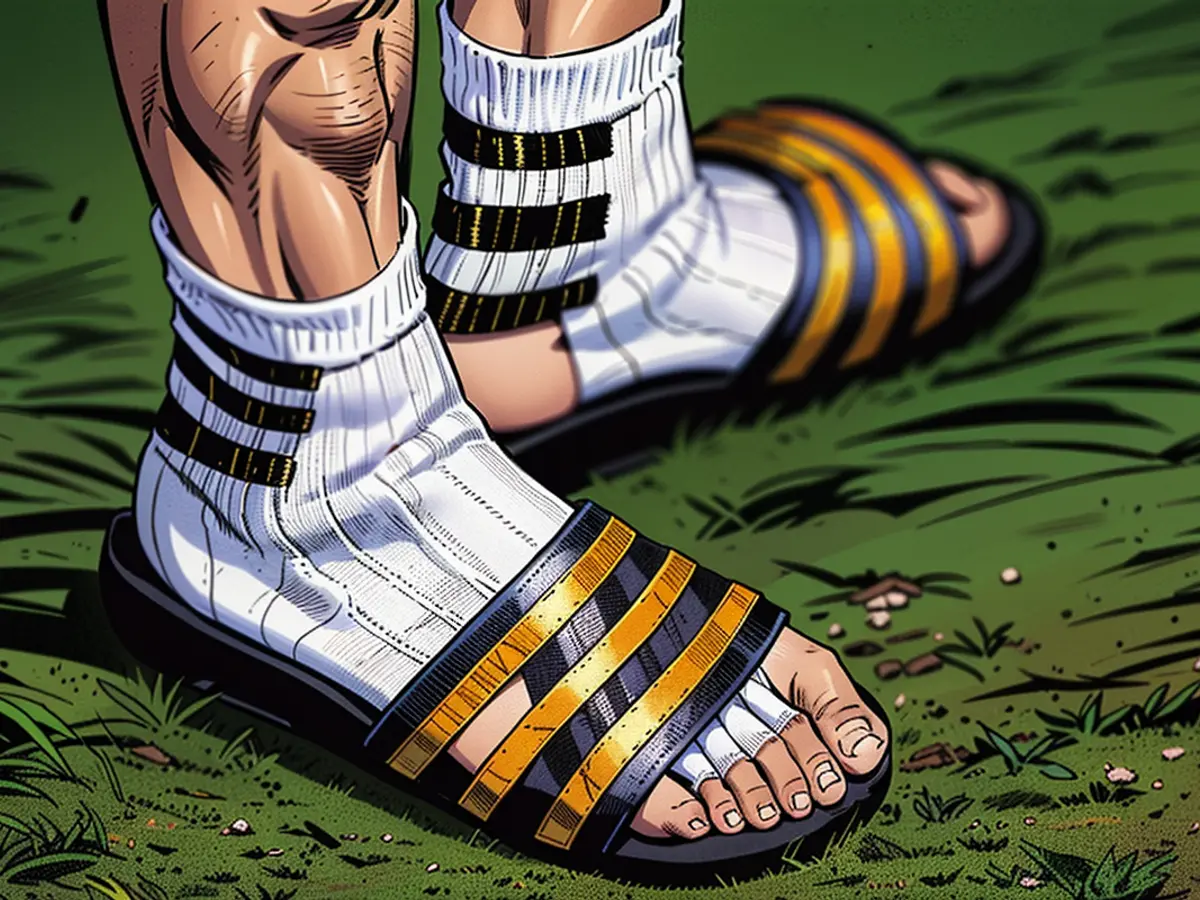White socks are back in fashion
Long considered fashionable to wear socks as invisible as possible, with feet freezing cold. But fashion changes: (White) socks are back in trend again - and are happily worn high up. A countermovement from Gen Z?
For a long time, white socks were the nightmare of style experts and apparently the identifying marker of German tourists abroad: the white sock. But fashion is always in flux. And so it comes about that sporty socks, proudly or defiantly shown, are now in trend and no longer a taboo. They are even worn with short pants, so that the brand can be seen clearly (Nike, Adidas, Puma and Co). The white sock is back. That means it was probably never really away, but it had a bad reputation. That's over. Fashion icons from the so-called Generation Z of today, approximately 15- to 30-year-olds - from pop star Billie Eilish to actor Paul Mescal - wear old-fashioned-classic socks as if it's second nature.
At least by 2024, let the short sneaker socks of the Millennials, the approximately 30- to 45-year-olds, rest in the closet - and especially the ones that make it look like we're barefoot in the shoes. "Instead of nearly invisible socks, they should be the ones that can be seen from a kilometer away," wrote recently the "Süddeutsche". As a guest at the Milan Fashion Show, Paul Mescal showed "unpolished and unworn, hairy men's legs in white cotton socks". "German retirees have always known it." For a Gucci campaign, film and series star Mescal posed with white socks in loafers. He then wore them in mid-June at the label's fashion show. What caused even more attention: The 28-year-old looked as if he had forgotten to put on pants. He wore only shorts. Very short (boxer-)shorts. The Viennese "Standard" commented, that's now chic: "Who shows off his thighs in this heat hasn't lost control of the fashion show." The "W Magazine" meant, men could also "experiment with the trend of openly worn underwear".
But that's actually another story. Back to the socks. "The comeback of visible socks is a kind of countertrend to a phase where it was fashionable to show ankles, to wear socks or to completely do without socks and to slide barefoot into the shoes," says fashion editor Sebastian Schwarz from the trade magazine "TextilWirtschaft". "A trend that could be uncomfortable for the feet, and that looked particularly funny when you took off the shoes." Socks have been a fashion statement of all kinds again for some time. High-rise tennis socks are turned into sneakers, elegant loafers, but also into Birkenstocks and trekking sandals, as Schwarz explains. "In the Streetwear- and Hip-Hop-context, white socks are also combined plastically with pool slides and Adiletten." Socks say yes or no? "It all depends on the type and the outfit. And of course on the pants and the footwear. Not every trend fits every person."
White stands historically for body hygiene.
The clothing historian Julia Burde explains: "The man in sandals and white socks is a much criticized figure. The criticism is less about the white than about the sock-wearing in sandals, which neither corresponds to the origin of the sock nor to that of the sandal." The mocking of white socks as men's fashion trends has become almost self-sufficient in the last few decades. Historically, white socks can be traced back to sports clothing in the 19th century in the Anglo-American sphere, according to Burde, who teaches the history of clothing at the University of the Arts Berlin. "The color White indicates hot washing at boiling temperature, which could not hold a dye permanently in the 19th and early 20th century. White is therefore synonymous with body hygiene." Approximately from the 1940s onwards, white socks became part of teenage and college fashion in the USA. "The white sock was inseparably linked with Pennyloafers, the mandatory shoe for both genders of American elite universities since the 30s," says Burde.
The visibility of the sock accentuated the slipper-like form of the loafer, and bright white was primarily used for optical staging. The youthful fashion style of wearing socks visible, corresponded to the "tapered trousers" of the 40s with a distinctly small waistband of the pants or the only calf-length, narrow trousers of the Italian gentlemen's fashion of the 50s and 60s. "Besides these countercultural practices, the white tennis sock retained a clearly functional significance, which belongs to the context of sportswear and casual," says Burde. The so-called Casual Friday allowed American middle-class men since the 1950s to wear comfortable office clothing approximately once a month, such as short-sleeved shirts. "Casual" merged with sportswear in this way to become a designation for everything informal and comfortable that rejects dress codes and elegance principles. "This is expressed in the stereotype of the unstylish leisure clothing of the man in tennis socks and sandals, who thus distinguishes himself from supposedly feminine fashion consciousness."
The fashion trend of visible socks has gained popularity among international societal groups, including Generation Z in Berlin. Notably, fashion icons like Billie Eilish and Paul Mescal have been seen wearing white socks as a common fashion choice.
This shift towards visible socks can be seen as a countertrend to previous trends that emphasized the visibility of ankles and the trend of going barefoot in shoes. This new trend is celebrated in various fashion events, such as the Milan Fashion Show, where Mescal showcased his white socks with short pants.






